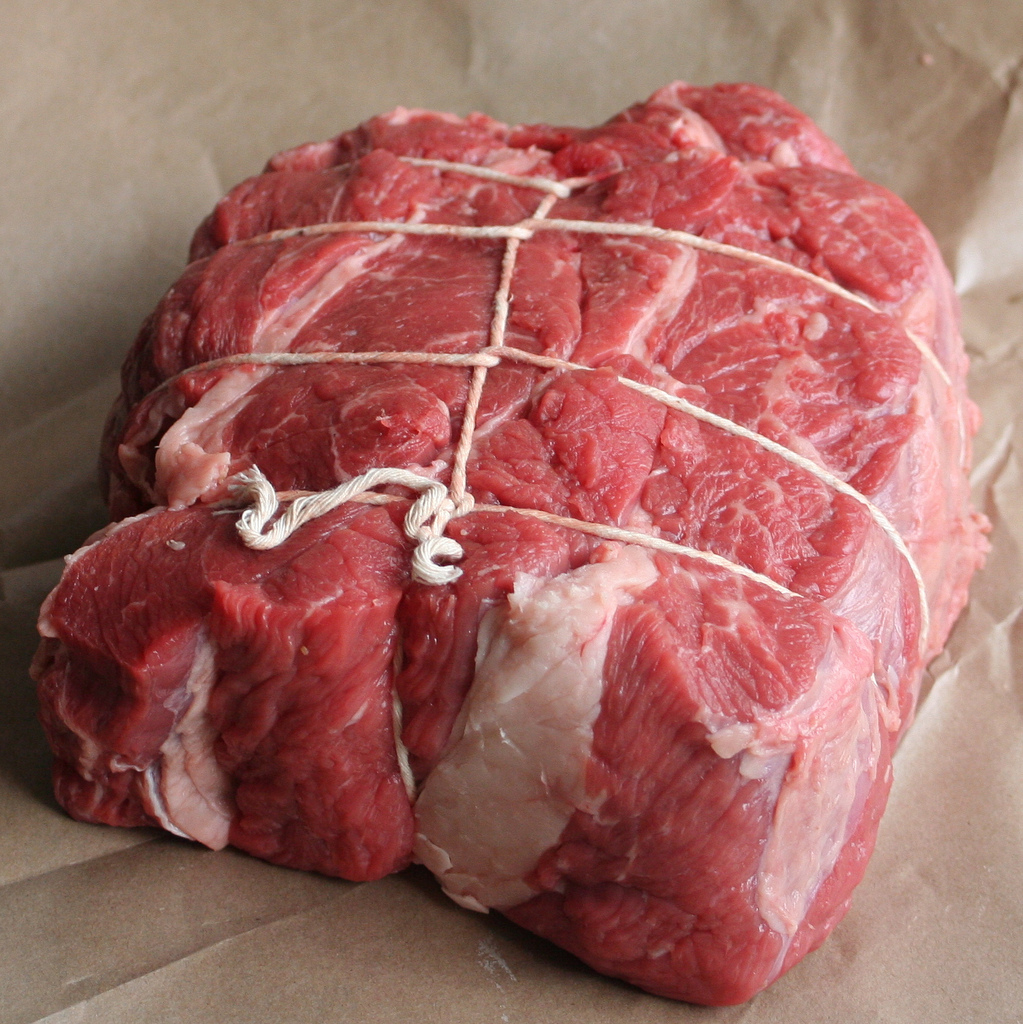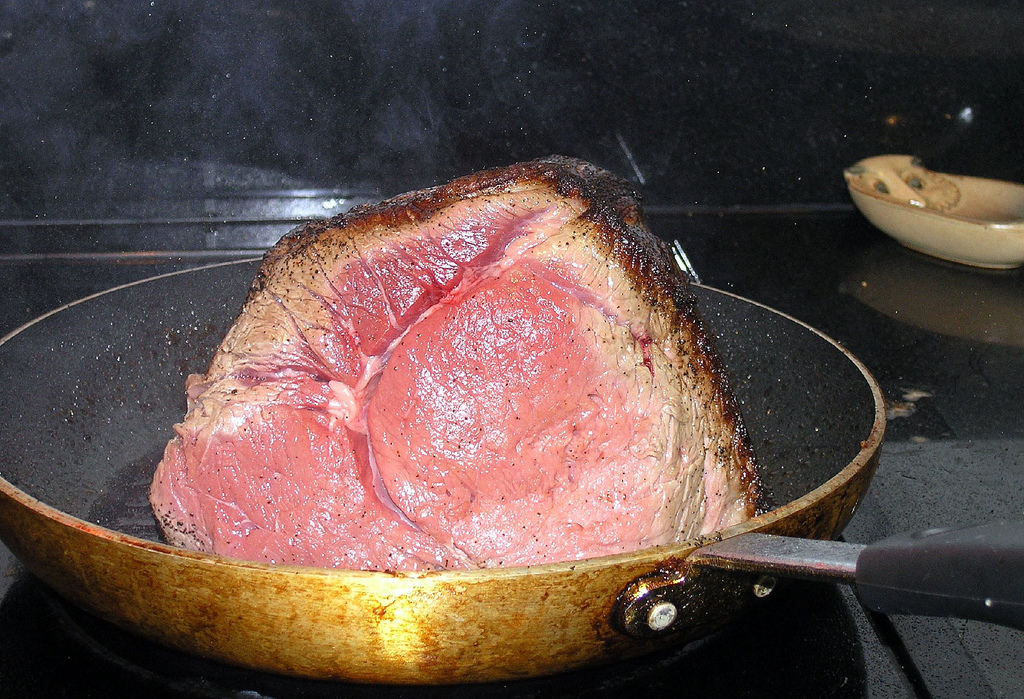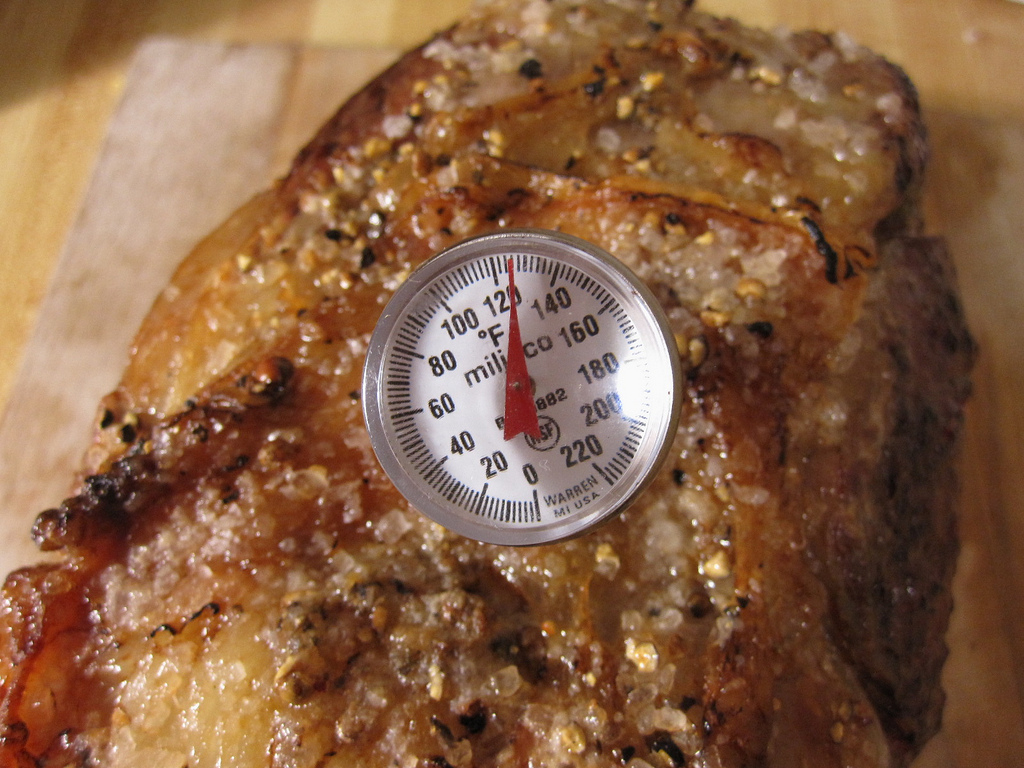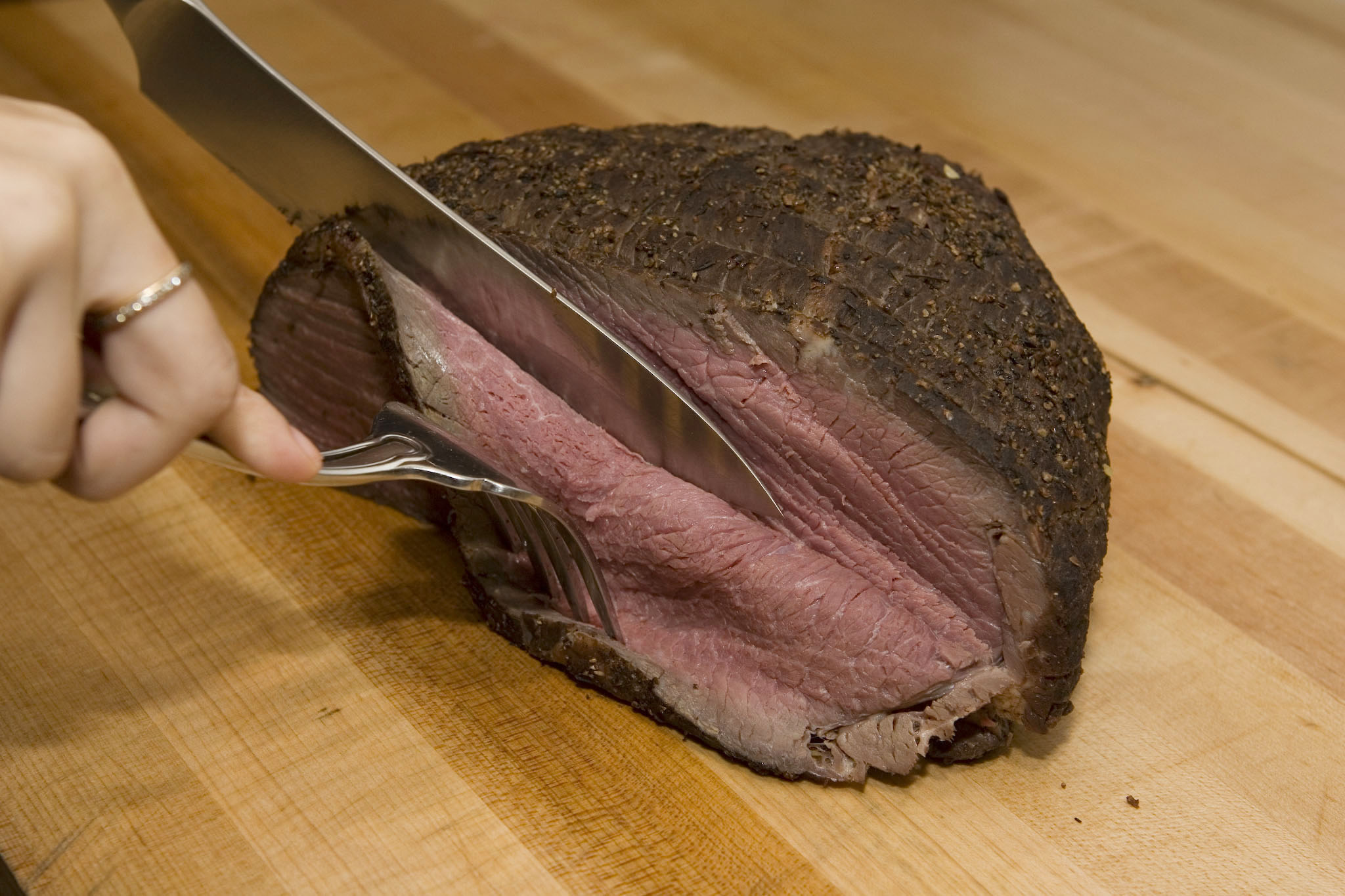How To Make Roast Beef
And now to introduce a roast that needs no introduction.
::applause::
What can't you do with a huge slab of roast beef? We'll tell you what you can do:
But before you start planning all the amazing leftovers, get your roast on, slice it up (it's leaps and bounds easier than finding the joints in turkey wings) and serve it with just about any side dish you (or we) can dream up.
Here's what you'll need:
Tie the roast
Using butcher's twine, tie the roast. Don't strangle it and don't give it too much slack. You don't need to take a class on roast-tying, just loop it tightly around the sides a few times and once lengthwise so it keeps its shape and makes more attractive slices. If you can make it look like the photo, you're all set. Season with plenty of pepper.
Sear the roast
Over a medium flame, heat enough olive oil in the pot or pan to coat. When almost smoking, carefully drop the roast in. Allow to cook until brown and crisp on all sides (about 3-4 minutes each), then transfer to a roasting pan and preheat the oven to 250 degrees.
Roast that roast, then rest that roast
Cover with foil and roast for 10-12 minutes per pound. When the internal temperature reaches 110, remove roast from the oven and crank up the oven to 500 degrees. Return the roast to the oven and cook for 20 minutes, or until internal temperature reaches 120 degrees for rare or 125 for medium rare. Any more cooked than that and you're on your own, buddy. Remove roast from oven and allow to rest for at least 20 minutes to keep all the juices inside, where they belong.
Slice the roast
Thinly slice the roast against the grain (AKA: against whichever way the "stripes" go) using the sharpest knife you can obtain. If you ever needed to borrow a sharp knife from the neighbors, now's the time.
...and serve with fixins.





